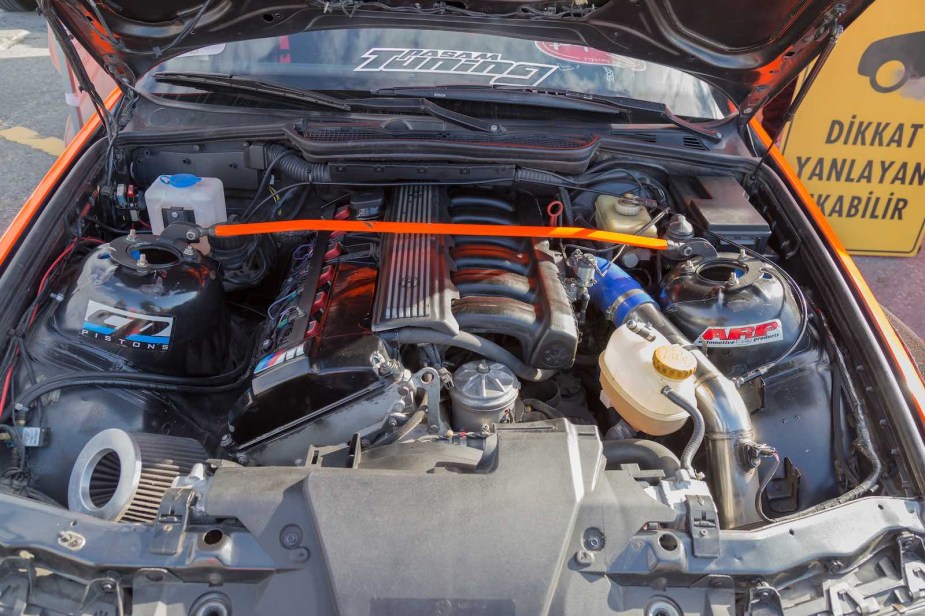
European Cars Need Twice as Much Oil for a Good Reason
When I bought an old BMW with a 3.0-liter (183-cubic-inch) I6 engine, I was blown away at my first oil change. See, the car called for seven quarts of motor oil. For comparison’s sake, my 300-cubic-inch F-150 I6 only needs five quarts.
I did some poking around and found some European cars need twice as much oil as a similar engine built elsewhere. For example, a 2.7-liter Porsche Boxster engine holds a whipping nine quarts of oil. JDM cars that are about 2.7 liters need between for and five quarts.
When I bought a European car, I fully expected to buy the special “European car” synthetic motor oil I see at the autoparts store. But I didn’t expect an oil change would require two jugs of the stuff. So what’s going on here? It may just be a different approach to engine oil.
Let’s start with what exactly that “European car” oil is. All engine oil in the U.S. must meet SAE standards. But in Europe, that wouldn’t be good enough. The equivalent (ACEA) standard requires additives to keep the oil from breaking down. It is more like the expensive “long life” oils you can splurge on in the U.S.

So twice as much oil, plus long lasting additives, Europeans must be changing their oil…half as often. Bingo.
For many vehicles sold in Europe, oil change intervals are closer to 15,000 miles. Yup, that’s already converted from kilometers. For its latest E-Class, Mercedes recommends owners swap out oil every 20,000 miles–or two years if that comes first. That boggles my ‘merican brain.
Will we ever see a more “European” approach to oil and changes in the U.S? Because it could be more environmentally friendly, we may well see future cars engineered for fewer oil changes.
Next, find out why European drivers can buy cars with zero star crash ratings.



